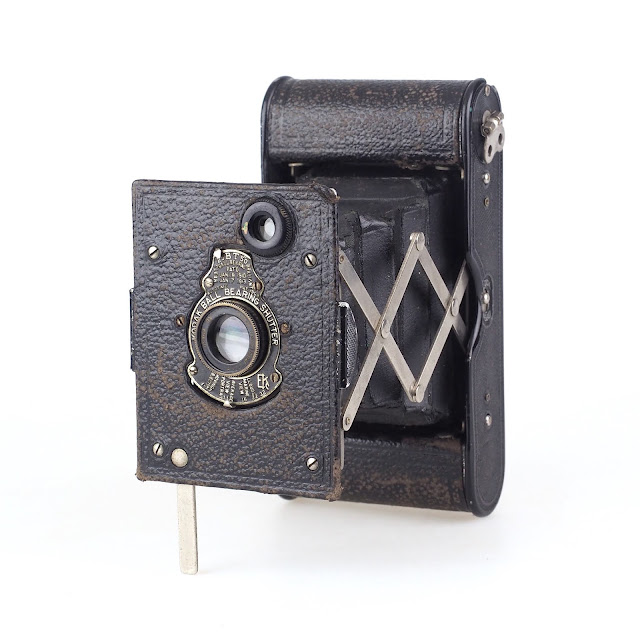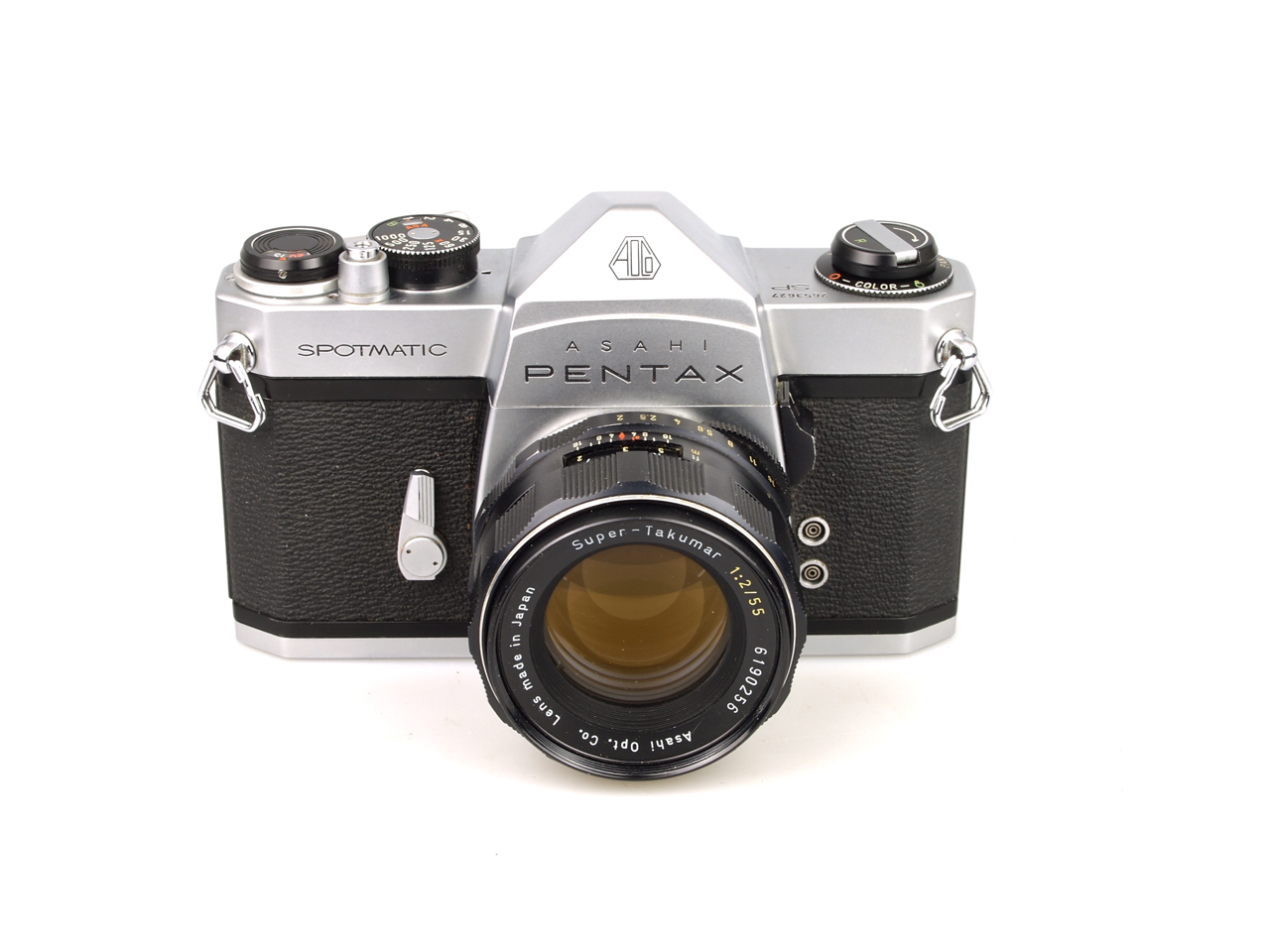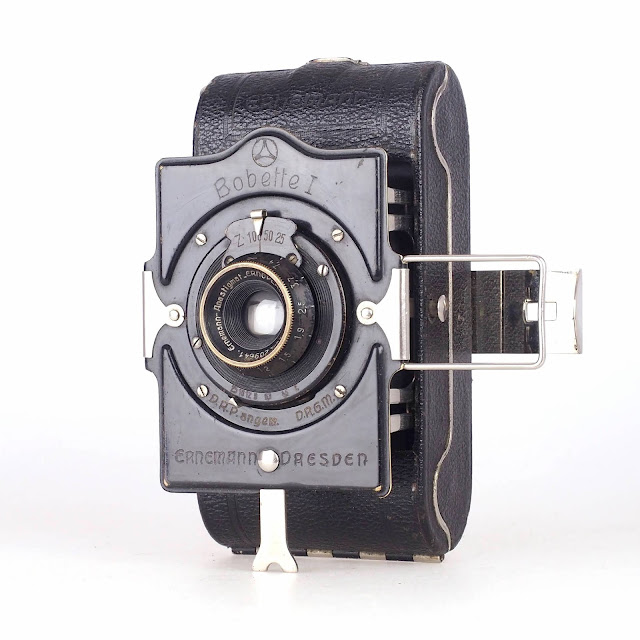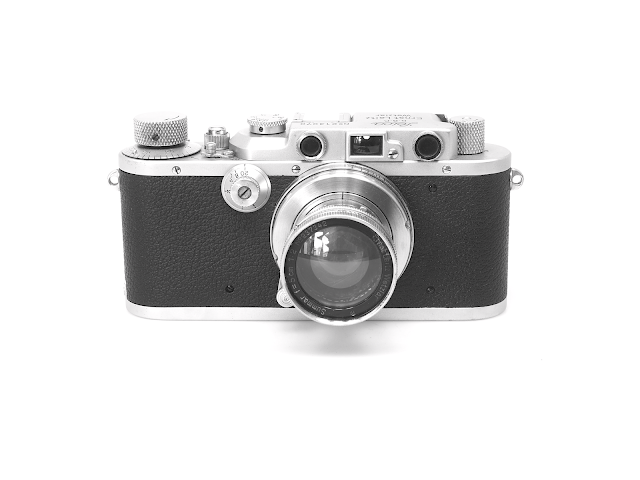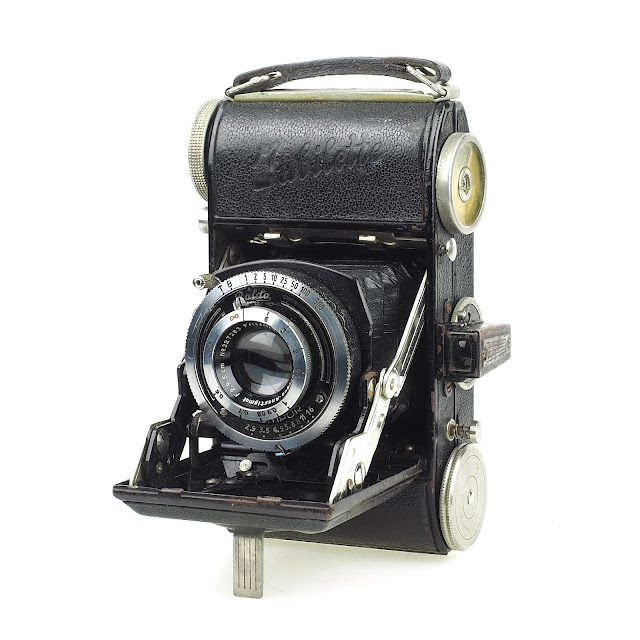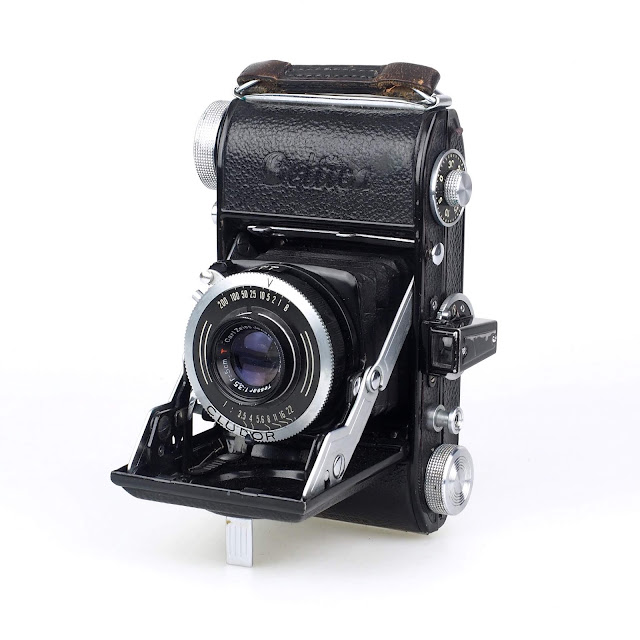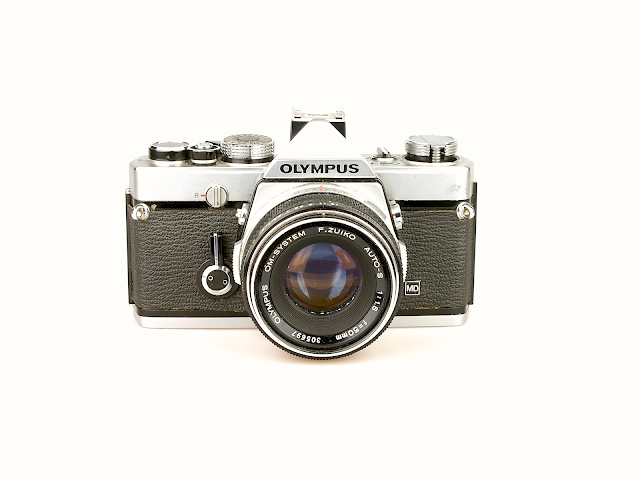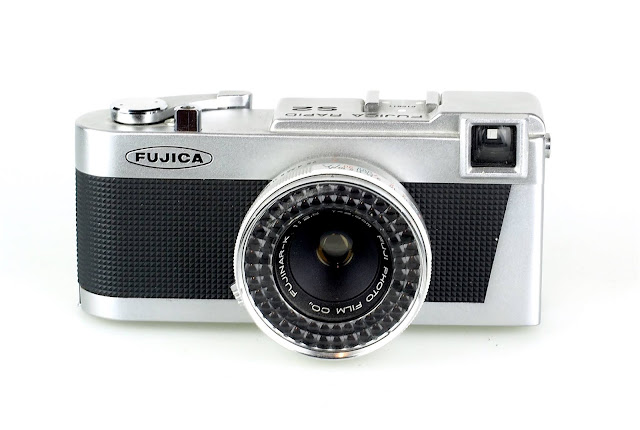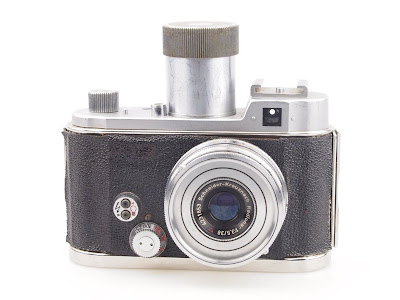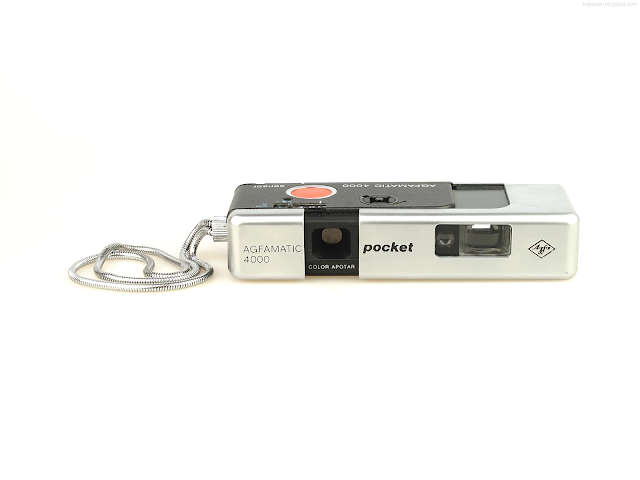Size is a feature of cameras which is easily overseen. It is
important though, as people have to carry their cameras. The smaller
and lighter a camera is, the higher the probability that it is put
into the pocket or a bag and just carried around without a certain
purpose to take a specific image. To create, design or produce a
small camera is much harder than a larger or just a standard size
one. You can start with a small negative format, but then you have
to compromize with image quality and sometimes usability. Or, you
can take a decent film format and just try to arrange the neccessary
parts and functions in a way, that all is usable but just takes the
minimal space needed.
I personally think that camera designs which focus on size and
usablity are particularilly fascinating, if not beautiful.
Therefore, I made this chapter one of my core areas of my
collection. And, there is Yoshihisa Maitani, an outstanding camera
designer who left us with four timeless beautiful and compact
designs, which are all in my posession. Have fun browsing around.
Early small cameras
Cameras of the 19th century were bulky, heavy and mostly required a
tripod. At the end of the century rollfilm was invented and simple
box cameras became available, which could be carried around more
easily. However, it was the Vest Pocket Kodak of 1912 being the
first camera, which could be called small enough to be carried
everywhere. Besides the 127 roll film, which was invented for this
purpose, there were a few other attempts to create some small film
cameras. This is their section, which I hope to fill up further...
|
|
|
| Vest Pocket Kodak
(USA, 1912-1926). Very succesful (>1.8 mio units) camera.
One of the first, that really fit into a vest pocket.
Introduced 127 roll film. |
ICA Icarette
(Germany, 1912-1925), with Zeiss Ikon label until 193x.
Successful vest pocket camera and the first camera for the
quare format 6x6 on 120 film.
|
Contessa-Nettel
Piccolette (Germany, 1919-1926), with Zeiss Ikon label until
1930. A VP Kodak clone with some neat extra features.
|
|
|
|
 |
G.A. Krauss Rollette (Germany,
1924-1931). First German camera using the 129 film and a
very compact design concidering 40% more image area than the
VP film 127.
|
Ernemann Bobette I (Germany,
1926). Early pocketable camera for 22x33 mm images on
proprietrary 35mm rollfilm. Continued as Zeiss Ikon Bobette
after 1926. |
C.P.Goerz Roll-Tenax 4x6.5
(Germany, 1914). An early German VP Kodak competitor with
Compound shutter. |
Half format cameras (3 x 4 cm) on 127 roll film
During the late 1920ies and the early 1930ies both, film quality as
well as camera technology improved and it became possible to produce
small and pocketable cameras. Many think that the Leica created this
small format market, but in its early days most of the available
cameras used the so called Vest Pocket film (127) with 16 exposures
of portrait orientation 3x4 cm (or 1 5/8 x 1 1/4 inch) sized
negatives. Most of the cameras appeared in a relative small time
window between 1930 and 1932, and
disappeared
again just a few years later, when the 135 cartridge with its
36 exposures won the market. However, there are still a few cameras
which (again) appeared during the 1950ies. This is a segment I will
keep looking for in the future and add some more to my collection.
|
|
|
| Nagel Pupille
(Germany, 1931). The "Queen" of all 3x4 cameras. Elaborately
and imaginatively designed, precisely manufactured. |
Nagel Ranca
(Germany, 1930). Low-budget version of the Pupille with the
same body. Available in 2 versions.
|
Zeh Goldi
(Germany, 1930). This is a no-name model, Zeh produced it
for other under different brands. It also got copied in
Japan... |
|
|
|
|
| Nagel Vollenda 48 (Germany,
1931-1936). Nagel's entry into this camera class. It was
larger than the pupille, but due to an Aluminum body
slightly lighter. |
Kochmann Korelle 3x4 (Germany,
1931). Quite common 3x4 camera with a Compur shutter
and a Schneider Xenar lens. |
Welta Gucki 3x4 (Germany,
1931). Similar to the Korelle, but with a simpler shutter
and lens. Smallest of my 3x4 cameras. |
|
|
|
|
| Nagel Vollenda 48 (Germany,
1932). Second version of this camera with slight changes. |
Voigtländer Perkeo (Germany,
1932). Named after a known court dwarf, Voigtländers
interpretation of a 3x4 folding camera. |
Zeiss Ikon 520/18 "Baby
Ikonta" (Germany, 1932). The low price model for the market
from Zeiss Ikon carried the famous Iknota name. |
|
|
|
|
| Zeiss Ikon Kolibri (Germany,
1931). Zeiss Ikon's high end model for the 3x4 camera
market. Quite special design. |
Foth Derby 2a (Germany,
1931-1935). Very interesting camera with a focal plane
shutter. |
KW Pilot (Germany, 1931). The
one and only TLR among the 3x4 cameras. High end features
and high price. Quite rare.
|
|
|
|
|
| Ising Puck (Germany,
1948-1950). Most sofisticated camera of this relatively
unknown producer. |
Ferrania Tanit (Italy, ca.
1955). Simple Box-style camera, just to boost Ferrania film. |
Baby Minolta (Japan, 1935).
Early Japanese bakelite camera for 127 film and two formats.
Simple shutter and lens. |
Small cameras for 24 x 36 mm images
Originally, cameras using the 35 mm cinematographic film were quite
compact, although the earliest models from the 1920ies resembled
movie cameras and were quite bulky. The Leica from 1925 was compact
though and much more pocketable than many other (larger format)
cameras of its time. However, over the years more and more functions
entered the cameras (like rangefinders, exposure meters, etc.) and
the manufacturers got lazy to design the cameras in a still compact
way. This section is for both, the early compact cameras and the
late approaches to really produce compact designs despite the 24x36
mm image size.
|
|
|
|
Leica III
(Germany, 1933-1939). Central model of the pre-war Leica
screw mount camera series. With collapsible lens quite
compact. Leica introduced 24x36 on cine film to still
photography.
|
Kodak Retina (118,
Germany 1935). Very compact foldable design. First camera on
Mount Everest, introduced standard 135 cartridge to the
market.
|
Kodak Retina I
(126, Germany 1938). Another pre-war Retina from my
collection.
|
|
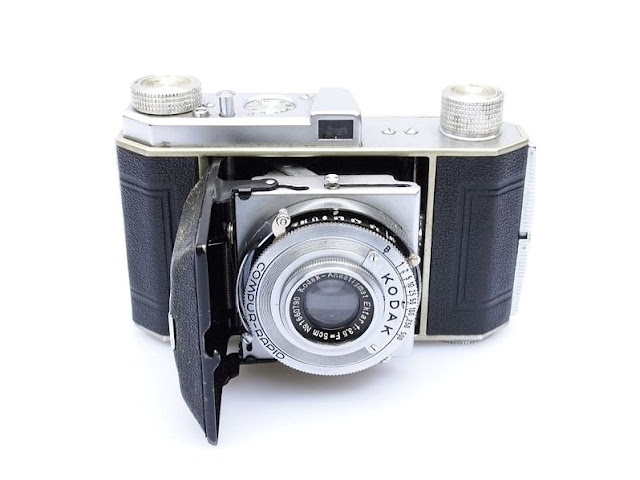 |
|
|
Kodak Retina I
(010, Germany 1946). Early post-war Retina.
|
Mimosa II
(East-Germany, 1949). Compact and unusually shaped
viewfinder camera. First post-war design from East-German
Zeiss Ikon branch, launched under a photopaper brand.
|
Braun Paxette
(Germany, 1950). First post-war camera from Braun. Very
compact with optical light meter. |
|
|
|
|
| Welta Welti (Germany,
1935-1939 and 1948-1953). Another competitor of the Retina
in very similar style. |
Balda Jubilette (Germany,
1938). Aniversary modell of the Baldina, Retina's strongest
direct competitor. |
Belca Beltica (East-Germany,
1951). Technically the same as the pre-war Baldina. However,
a technical evidence for the impact of war and German
separation
|
|
|
|
|
Rollei 35
(Germany, 1966-1971). Smallest 24x36 camera until the Minox.
Ingenious design of Heinz Waaske.
|
Rollei B35
(Singapore, 1971). Cheaper base version of the series with
uncoupled Se-meter and simpler lens.
|
Rollei 35 SE
(Singapore, 1982). Top model of the Series with Sonar lens
and LED indicators.
|
|
 |
 |
| Smena 8M
(UdSSR, 1970-1995). Exceeding 21 mio units, most produced
analogue camera of all times. |
Zeiss Ikon
Contessa S310 (Germany, 1971). One of the last German
cameras of this kind. High end with aperture prio AE. Quite
compact, although fully loaded.
|
Konica C35V
(Japan, 1971-1076). Very compact automatic camera. Her 3
year older, similar sister C35 set new standards for this
camera class. |
|
|
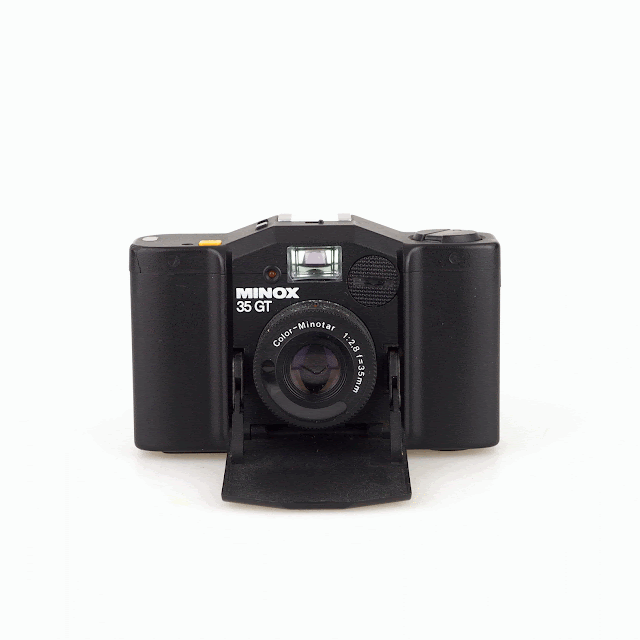 |
|
Olympus XA (Japan,
1979-1985). Smallest rangefinder camera for 135 film ever. A
real pocket camera and a design jewel. Maitani!
|
Minox 35 GT
(Germany, 1981). Smallest 24x36 camera from 1974-1996.
Different models with quite some automation available.
|
Minolta TC-1 (Japan 1996). Smallest 24x36
film camera since. Unfortunately, missing in my
collection.
|
|
|
|
|
| Olympus OM-1 (Japan,
1972-1987). Smallest SLR of its time, setting new design
standards. Maitani! |
|
|
Cameras for Karat, Rapid and SL cartridges
Eastman Kodak was most successful in launching new film formats and
cartridges on the market (see my post about the
Vest
Pocket Kodak). But also Kodak's most important European
competitor Agfa tried to establish one own standard, which is the
Karat cartridge for 35 mm fim in 1937, which basically failed during
the difficult times of WWII. Interestingly, there were two attempts
during the 60ies to revive the concept: One by Agfa in West-Germany
called Rapid, which was even used by some Japanese camera producers.
The other was by Orwo, the East-German Agfa successor, who called it
SL-Kassette (Schnell-Lade Kassette = 'quick loading cartridge').
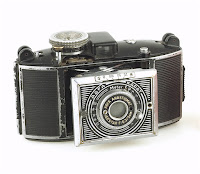 |
|
|
| Agfa Karat 6.3 Art
Deco (Germany, 1937). Agfa's answer to Kodak's Retina and
the new 135 cartridge. Uses Karat cartridges. |
Agfa
Isoflash-Rapid (Germany, 1965-1966). Agfa's answer to
Kodak's Instamatic was a reborn Karat cartridge from the
30ies. |
Penti II (DDR,
1961-1977). One of the most successful German pocketable
cameras. Its predecessor Orix re-introduced the old Karat as
SL-System.
|
|
|
|
| Pentacon Electra (DDR, 1967).
Electronically controlled shutter and aperture prio auto
exposure in a modern plastic body. Not very small, though
but using the SL cartridge. |
Yashica half 17 EE Rapid
(Japan, 1965). Fully automatic (electric eye) half format
camera for Agfa Rapid cartridges.
Nice and compact design. |
Fujica Rapid S2 (Japan, 1965).
Fully automatic (electric eye) camera for Agfa Rapid
cartridges and 24x24 mm negatives. Very solid build, clean
design. |
Half format cameras (18 x 24 mm) on 35mm film
Originally, 35 mm wide film was used for cinematography. Here the
image format was 18x24 mm. However, most still cameras used 24x36 mm
in landscape mode (nowadays called "full-format"), as it would offer
a higher resolution in times when emulsion technology was not quite
as advanced. In order to build small cameras some designers
"re-invented" the 18x24 mm format, mostly in portrait mode now, and
called it "half-format". During the 60ies this became quite
popoular, especially in Japan.
|

|
|
Kochmann Korelle K
(Germany, 1932). Early half format 35mm film camera in
modern shape. First Bakelite camera produced in Europe.
Quite innovative and rare.
|
Olympus PEN EES-2
(Japan, 1968-1971). A popular later member of the georgeous
PEN series of very compact, high-end but affordable cameras.
Maitani! |
Universal Mercury
II (USA, 1946). Not particulary small half format camera,
due to unique rotary shutter. First camera with a flash hot
shoe! |
|
|
|
Yashica half 17 EE
Rapid (Japan, 1965). Fully automatic (electric eye) half
format camera for Agfa Rapid cartridges.
Nice and compact design. |
Olympus Pen F
(Japan, 1963-1966). Most unusal SLR, half format. Specially
designed rotary shutter as well as porro prism finder. Very
compact and beautiful, excellent lenses. Maitani! |
Olympus Pen FT
(Japan, 1966-1972). Consequent improvement of the Pen F in
the same body, adding TTL-metering and a self timer. |
|
|
|
|
Taron Chic (Japan 1961-196x).
Unusual half-frame with built-in selenium meter and a
vertical design.
|
Penti II (DDR, 1961-1977). One
of the most successful German half-format cameras. Used the
SL-System film. |
Yashica half 17 EE Rapid
(Japan, 1965). Fully automatic (electric eye) half format
camera for Agfa Rapid cartridges.
Nice and compact design. |
Square format 35 mm (24x24 mm, 25x25 mm)
Square format has always been a subject for aesthetical disputes.
Some like it, some hate it. However, camera manufacturers used it
for 35mm cameras and created some quite interesting and compact
designs.
|
|
|
Zeiss Ikon Tenax
(II) (580/27, Germany 1938-1941). First camera with a fast
advance lever, exchangeable lenses, high end quality and
price. Hubert Nerwin's masterpiece and highly collectible
today.
|
Zeiss Ikon Tenax I
(570/27, Germany 1939-1941). 24x24 square format. Affordable
and pocketable camera. Like its older sister with a fast
advance lever. Continued production as "111/23" from 1948 to
1953 at VEB Zeiss Ikon, DDR. |
Robot Junior
(Germany, 1954). Special rotary shutter, based on a design
from 1934. 24x24 mm square format, spring motor. Quite heavy
despite small size. |
|
|
|
|
| Bolta Photavit IV (Germany,
1948). Smallest 35mm film camera of its time. 25x25 mm
images, special cartridges. A spooling tool is included in
the package. |
Fujica Rapid S2 (Japan, 1965).
Fully automatic (electric eye) camera for Agfa Rapid
cartridges and 24x24 mm negatives. Very solid build, clean
design. |
SIDA (Germany, 1936). Simple
miniature box-camera for special 32mm Sida roll film. With
some interesting history behind... |
Cameras for very small formats need to make compromises regarding
image quality. Enlargements larger than 10x15 cm rarely looked good,
due to missing resolution of the film and/or the lens. Some of the
cameras are really tiny, like the iconic Minox from 1937, which I
don't own yet, unfortunately. Some are not and even bigger than
small normal cameras, but still interesting to be collected.
|
|
|
|
Hit Camera (Japan, 1950). Very
small and simple (box-style) camera for 17.5mm wide roll
film, image size is 14x14 mm. Smallest camera in my
collection.
|
Minox B (Germany, 1958-1972). THE
miniature camera. Unfortunately, not the original
Latvian model from 1937. Very timeless design, though
and a must for every camera collection.
|
Acmel MD (Japan, 1991-1997).
Automatic camera for Minox film. Negative size is 8x11 mm.
|
|
|
 |
|
Pentax auto-110 (Japan,
1978-?). The smallest system SLR with exchangeable lenses
ever made. For 110 cartridge, negative size: 13x17 mm.
|
Minolta 110 Zoom (Japan
1976-1979). First SLR for 110 cartridge. Not very small,
though. Was succeeded by a more compact version, the last
110 SLR!
|
Kodak Disc 4000 (USA, 1982).
Kodak's last trial to create a people's camera. Not very
compact though, compared to the tiny negative format of 8x11
mm.
|
|
|
|
|
Minolta 16-II (Japan,
1960-1974). Very nice and usable implementation of the Minox
concept for 16 mm film in special cartridges. Image size:
10x14 mm.
|
Agfamatic Pocket 4000
(Germany, 1974). Agfa's very succesful implementation of a
beautiful real pocket camera for 110 Instamatic film.
|
|
 Cameras for Karat, Rapid
Cameras for Karat, Rapid  Half format 35mm
Half format 35mm 
